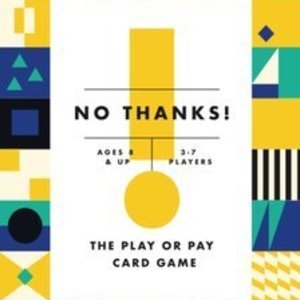Search
Search results
Phillip McSween (751 KP) rated Swinging Safari (2019) in Movies
Oct 29, 2019
Whomp Whomp...
I was strongly hoping I had found a hidden gem in Swinging Safari. Not so much…Taking place in 70’s Australia, it follows the lives of three neighborhood families and how their lives swing out of control when they get a little too close.
Acting: 10
Beginning: 3
Characters: 5
There are some instances in movies where the characters alone are enough to carry the movie (see Everybody Wants Some!!). Not so much here. Outside of the two main characters, the rest of the cast was pretty unlovable. Their lack of redeeming qualities made it hard for me to root for anything good to happen to any of them. Typically when the characters suck, the rest of the movie isn’t far behind. Unless of course it’s an action movie…
Cinematography/Visuals: 10
I have no idea what 1970’s Australia looks like but I feel like I was right in the heart of it here. The way this movie captures certain scenes is pure magic and, in some case, extremely original. One scene in particular features all the adults inside playing games and drinking while the kids are outside doing daredevil stunts for a makeshift film. It’s hilarious watching the adults argue while the kids are trying to put out a fire…a fire they purposefully set upon one of the kids. Extremely well done.
Conflict: 5
It’s not that there wasn’t conflict here. It’s just that I didn’t really care enough about it for it to be substantial. Again, conflict against characters you don’t care about is tough for me to enjoy. I was looking for more, something more meaningful.
Entertainment Value: 5
The fun factor of this movie is few and far between. It has its moments, but overall, it feels very average. Dead Horse: Drab characters really put a damper on this movie as a whole.
Memorability: 6
I can honestly say that there are a couple of unique scenes that I’ve never seen before in any other movie. I don’t want to ruin things by diving too much into the dynamics, but there are some flashes of greatness here that I really appreciated. As a whole, the movie was more forgettable than anything.
Pace: 6
Plot: 1
Resolution: 10
I have to say, despite its flaws, this movie has one of my favorite endings of film. Without spoiling anything, we’ll just say it definitely goes out with a bang. It’s a glimpse of what the movie could have been as a whole.
Overall: 61
Swinging Safari sadly strikes out for me. Despite an endearing relationship between the two young characters and a few beautiful shots and setpieces, the movie has glaring holes that can’t be plugged up. I will have to look for my gem elsewhere.
Acting: 10
Beginning: 3
Characters: 5
There are some instances in movies where the characters alone are enough to carry the movie (see Everybody Wants Some!!). Not so much here. Outside of the two main characters, the rest of the cast was pretty unlovable. Their lack of redeeming qualities made it hard for me to root for anything good to happen to any of them. Typically when the characters suck, the rest of the movie isn’t far behind. Unless of course it’s an action movie…
Cinematography/Visuals: 10
I have no idea what 1970’s Australia looks like but I feel like I was right in the heart of it here. The way this movie captures certain scenes is pure magic and, in some case, extremely original. One scene in particular features all the adults inside playing games and drinking while the kids are outside doing daredevil stunts for a makeshift film. It’s hilarious watching the adults argue while the kids are trying to put out a fire…a fire they purposefully set upon one of the kids. Extremely well done.
Conflict: 5
It’s not that there wasn’t conflict here. It’s just that I didn’t really care enough about it for it to be substantial. Again, conflict against characters you don’t care about is tough for me to enjoy. I was looking for more, something more meaningful.
Entertainment Value: 5
The fun factor of this movie is few and far between. It has its moments, but overall, it feels very average. Dead Horse: Drab characters really put a damper on this movie as a whole.
Memorability: 6
I can honestly say that there are a couple of unique scenes that I’ve never seen before in any other movie. I don’t want to ruin things by diving too much into the dynamics, but there are some flashes of greatness here that I really appreciated. As a whole, the movie was more forgettable than anything.
Pace: 6
Plot: 1
Resolution: 10
I have to say, despite its flaws, this movie has one of my favorite endings of film. Without spoiling anything, we’ll just say it definitely goes out with a bang. It’s a glimpse of what the movie could have been as a whole.
Overall: 61
Swinging Safari sadly strikes out for me. Despite an endearing relationship between the two young characters and a few beautiful shots and setpieces, the movie has glaring holes that can’t be plugged up. I will have to look for my gem elsewhere.
Sophia (Bookwyrming Thoughts) (530 KP) rated Gambit (The Prodigy Chronicles, #1) in Books
Jan 23, 2020
<b><i>I received this book for free from Publisher in exchange for an honest review. This does not affect my opinion of the book or the content of my review.</i></b>
<i>Gambit </i>is one of those books that are slow, but the slow feel of the book fits with the plot decently. Willow Kent, the main character, lives in a world where people with extraordinary powers live good lives in the Core (analogize it to the Capitol in the Hunger Games, if you will) and those without live in poverty. She doesn't really know much about her childhood aside from the fact she got left with a family and adopted by them at a really young age, and it remains that way until a Core officer discovers she is really a lost heiress and strives to bring her back to her original family.
Nearly half the book is located in a small village where Willow grows up in trading items is a thing, messengers traveling from the Core and back exist, and it's basically back to the old fashioned world where wearing a swimming suit is bad for ladies (because <em>perverts</em>). The characters in the villages have the <em>weirdest</em> character names I've ever seen, like Patchie and Temsik Temsik doesn't bother me as much as Patchie does. As for the Core... I'm not too sure about that one yet.
Every once in a while a name I've heard of actually pops up, like Willow, for instance. Willow has a fire in her that I like for some reason she's fierce, stubborn, and there's definitely some humor in her snark, especially towards Commander Reece (she's like a ball trying to bounce at the wall that won't budge).
The other half of the book is dedicated to a small portion of the Core where Willow was <em>supposed</em> to have grown up in. Although it's only one particular area and then some more, Denault gives enough information that gives a good idea on what the rest of the Core is really like. Blinds don't exist and it's the coolest technology ever. I personally think Willow will do perfectly fine harnessing the reins of the Core from the way she negotiates.
The first of the Prodigy Chronicles is a slow first book as Willow transitions from village life to Core life, but Denault is fantastic at not boring the readers with her writing <i>Gambit </i>has a lightheartedness to it that I really enjoyed and it seems to promise of better things and more action further in the sequels.
<a href="https://bookwyrmingthoughts.com/review-gambit-by-cl-denault/"; target="_blank">This review was originally posted on Bookwyrming Thoughts</a>
<i>Gambit </i>is one of those books that are slow, but the slow feel of the book fits with the plot decently. Willow Kent, the main character, lives in a world where people with extraordinary powers live good lives in the Core (analogize it to the Capitol in the Hunger Games, if you will) and those without live in poverty. She doesn't really know much about her childhood aside from the fact she got left with a family and adopted by them at a really young age, and it remains that way until a Core officer discovers she is really a lost heiress and strives to bring her back to her original family.
Nearly half the book is located in a small village where Willow grows up in trading items is a thing, messengers traveling from the Core and back exist, and it's basically back to the old fashioned world where wearing a swimming suit is bad for ladies (because <em>perverts</em>). The characters in the villages have the <em>weirdest</em> character names I've ever seen, like Patchie and Temsik Temsik doesn't bother me as much as Patchie does. As for the Core... I'm not too sure about that one yet.
Every once in a while a name I've heard of actually pops up, like Willow, for instance. Willow has a fire in her that I like for some reason she's fierce, stubborn, and there's definitely some humor in her snark, especially towards Commander Reece (she's like a ball trying to bounce at the wall that won't budge).
The other half of the book is dedicated to a small portion of the Core where Willow was <em>supposed</em> to have grown up in. Although it's only one particular area and then some more, Denault gives enough information that gives a good idea on what the rest of the Core is really like. Blinds don't exist and it's the coolest technology ever. I personally think Willow will do perfectly fine harnessing the reins of the Core from the way she negotiates.
The first of the Prodigy Chronicles is a slow first book as Willow transitions from village life to Core life, but Denault is fantastic at not boring the readers with her writing <i>Gambit </i>has a lightheartedness to it that I really enjoyed and it seems to promise of better things and more action further in the sequels.
<a href="https://bookwyrmingthoughts.com/review-gambit-by-cl-denault/"; target="_blank">This review was originally posted on Bookwyrming Thoughts</a>
Sophia (Bookwyrming Thoughts) (530 KP) rated The Polaris Uprising (Polaris, #1) in Books
Jan 23, 2020
Another bystander review yet again. T_T But throughout the story, I was making connections – yet again – to movies and books:
Corsets – Incarceron. Mercifully no prisons.
Probe Bots – *that seriously cute voice from that one movie* Wall-E! Of course, those robots had inflection and it's not Wall-E's voice I'm calling cute.
Arranged Marriages – At the time I started The Polaris Uprising, I completed Delirium not too long ago and it turned out to be a TERRIBLE experience. Fortunately, this book fared better off and it's not similar to Delirium. *phew* In fact... this quote got me quite worried:
<blockquote>When you’re president, this will all be a distant memory.</blockquote>
Is this similar to "When you're cured, this will all be a distant memory" or what? I could have sworn I saw that exact same sentence in Delirium a million times maybe. O_O (Obviously I didn't let that stop me from continuing).
Truth Serum – Welcome to the Candor faction. Need I say more?
That one sentence before this: And then all hell broke loose – Similar to The Hunger Games, but different. And no, that's no spoiler. Close, but no.
<blockquote>Alanna! Alanna!</blockquote>
e_e 1984's B! B! B! That book was quite dreadful, so I'm surprised I still remember the letter B! (that was not me in exclamation).
Now that I've gone through my dreadful (and some positive) experiences with some dystopians, let's get on with some positive notes and why I gave The Polaris Uprising a high rating:
~ The message comes across clearly throughout the book. Maybe confusing at first (switching views from the prologue and first chapter), but everything fits in nicely later.
~ Here's the big plus: it's different from other dystopians. As in really different. How? It's like many years later, a dystopian AFTER another dystopian failed. At least, that's what I assume. The signs were there, which brings me to my next point.
~ Dare to be different. I would've had to choose a faction back in September if I were in Divergent (Movie's out in 28 DAYS). Here, you're an adult at 25. That gives me what? 7-8 years to be a semi-kid? Yippee.
~ This might actually take a different end from other dystopians. Of course, there's no guarantee, so don't take that word for granted.
But overall, an impressive debut novel for Jennifer Ibarra.
-----------------------
Review copy provided by the author for review on the blog tour
Formatting is lost due to copy and paste
This review and more can be found at <a href="http://bookwyrming-thoughts.blogspot.com/2014/02/blog-tour-the-polaris-uprising-by-jennifer-ibarra-review-and-giveaway.html">Bookwyrming Thoughts</a>
<a href="http://bookwyrming-thoughts.blogspot.com/"><img src="http://4.bp.blogspot.com/-Gi5Rk5yLloA/UtliaUbdL3I/AAAAAAAACbE/J27z92_qrYU/s1600/Official+Banner.png"; /></a>
Corsets – Incarceron. Mercifully no prisons.
Probe Bots – *that seriously cute voice from that one movie* Wall-E! Of course, those robots had inflection and it's not Wall-E's voice I'm calling cute.
Arranged Marriages – At the time I started The Polaris Uprising, I completed Delirium not too long ago and it turned out to be a TERRIBLE experience. Fortunately, this book fared better off and it's not similar to Delirium. *phew* In fact... this quote got me quite worried:
<blockquote>When you’re president, this will all be a distant memory.</blockquote>
Is this similar to "When you're cured, this will all be a distant memory" or what? I could have sworn I saw that exact same sentence in Delirium a million times maybe. O_O (Obviously I didn't let that stop me from continuing).
Truth Serum – Welcome to the Candor faction. Need I say more?
That one sentence before this: And then all hell broke loose – Similar to The Hunger Games, but different. And no, that's no spoiler. Close, but no.
<blockquote>Alanna! Alanna!</blockquote>
e_e 1984's B! B! B! That book was quite dreadful, so I'm surprised I still remember the letter B! (that was not me in exclamation).
Now that I've gone through my dreadful (and some positive) experiences with some dystopians, let's get on with some positive notes and why I gave The Polaris Uprising a high rating:
~ The message comes across clearly throughout the book. Maybe confusing at first (switching views from the prologue and first chapter), but everything fits in nicely later.
~ Here's the big plus: it's different from other dystopians. As in really different. How? It's like many years later, a dystopian AFTER another dystopian failed. At least, that's what I assume. The signs were there, which brings me to my next point.
~ Dare to be different. I would've had to choose a faction back in September if I were in Divergent (Movie's out in 28 DAYS). Here, you're an adult at 25. That gives me what? 7-8 years to be a semi-kid? Yippee.
~ This might actually take a different end from other dystopians. Of course, there's no guarantee, so don't take that word for granted.
But overall, an impressive debut novel for Jennifer Ibarra.
-----------------------
Review copy provided by the author for review on the blog tour
Formatting is lost due to copy and paste
This review and more can be found at <a href="http://bookwyrming-thoughts.blogspot.com/2014/02/blog-tour-the-polaris-uprising-by-jennifer-ibarra-review-and-giveaway.html">Bookwyrming Thoughts</a>
<a href="http://bookwyrming-thoughts.blogspot.com/"><img src="http://4.bp.blogspot.com/-Gi5Rk5yLloA/UtliaUbdL3I/AAAAAAAACbE/J27z92_qrYU/s1600/Official+Banner.png"; /></a>
Purple Phoenix Games (2266 KP) rated No Thanks! in Tabletop Games
Jan 6, 2020
Can a game with absolutely no theme be any good? Let’s find out with today’s game: No Thanks!
Usually in my intros I like throw a little flavor that matches the theme of the game. Well, I just couldn’t think of anything so you get the shortest intro I have done to date. No Thanks! is a great card game of push your luck. Period. I’ll tell you all the rules here since this mighty game may be bypassed in stores as it looks very unassuming and bland.
You are trying to get the least amount of points in a very nontraditional way. In the deck are cards numbered 3-35. You shuffle them all up and randomly eject from the game 9 cards. Nobody will know which 9. Why does that matter? Well, you score points (which is bad) equal to the lowest number of all your runs of cards. So a run of 3-4-5-6 scores 3 points because 3 is the lowest card. However, if 5 was one of the ejected cards and you had 3-4 and 6, you total would be 9 (3 from the first run and 6 from the next run since there wasn’t a 5 to connect them).
How do you get these cards? Well, on your turn you flip over a card from the face-down stack. Decide if you want to take that card into your tableau or if you would like to pass. If passing, you plop a red chip on it (of the 11 you were given at setup) and offer it to the next player. They can take the card along with the chip, or add a chip of their own. The offer now goes to the next player who does the same. Whomever ends up with the card also collects all the chips to be used on future cards.
This doesn’t really sound all that fun does it? Well it most certainly IS fun once you give it a go! Especially when you’re trying to decide if you should just take the 15 because you already have a run of 12-13-14 and it would be worth zero points, but you are also running low on chips. Let it ride around the table a couple times and get those chips! But beware of your opponents who will take the card out of spite and now you can’t connect your runs and you are low on chips. Uh oh Daddy-O!
This game is great with all player counts, and with all ages who can understand the math behind their choices. That’s why we at Purple Phoenix Games authorize a non-themed score of 8 / 12.
Usually in my intros I like throw a little flavor that matches the theme of the game. Well, I just couldn’t think of anything so you get the shortest intro I have done to date. No Thanks! is a great card game of push your luck. Period. I’ll tell you all the rules here since this mighty game may be bypassed in stores as it looks very unassuming and bland.
You are trying to get the least amount of points in a very nontraditional way. In the deck are cards numbered 3-35. You shuffle them all up and randomly eject from the game 9 cards. Nobody will know which 9. Why does that matter? Well, you score points (which is bad) equal to the lowest number of all your runs of cards. So a run of 3-4-5-6 scores 3 points because 3 is the lowest card. However, if 5 was one of the ejected cards and you had 3-4 and 6, you total would be 9 (3 from the first run and 6 from the next run since there wasn’t a 5 to connect them).
How do you get these cards? Well, on your turn you flip over a card from the face-down stack. Decide if you want to take that card into your tableau or if you would like to pass. If passing, you plop a red chip on it (of the 11 you were given at setup) and offer it to the next player. They can take the card along with the chip, or add a chip of their own. The offer now goes to the next player who does the same. Whomever ends up with the card also collects all the chips to be used on future cards.
This doesn’t really sound all that fun does it? Well it most certainly IS fun once you give it a go! Especially when you’re trying to decide if you should just take the 15 because you already have a run of 12-13-14 and it would be worth zero points, but you are also running low on chips. Let it ride around the table a couple times and get those chips! But beware of your opponents who will take the card out of spite and now you can’t connect your runs and you are low on chips. Uh oh Daddy-O!
This game is great with all player counts, and with all ages who can understand the math behind their choices. That’s why we at Purple Phoenix Games authorize a non-themed score of 8 / 12.
Charlie Cobra Reviews (1840 KP) rated Pokémon: Detective Pikachu (2019) in Movies
Jul 7, 2020
A Really Great Video Game Movie
Pokemon: Detective Pikachu is a 2019 video game film adaptation directed by Rob Letterman with screenplay written by Letterman, Dan Hernandez, Benji Samit and Derek Connolly from a story by Hernandez, Samit, and Nicole Perlman. The movie is produced by Warner Bros. Pictures, Legendary Pictures and The Pokemon Company, in association with Toho Co., Ltd. It's based on the Pokemon franchise created by Satoshi Tajiri and the 2016 video game Detective Pikachu. The movie stars Justice Smith, Kathryn Newton, Suki Waterhouse, Ken Watanabe, and Bill Nighy.
Tim Goodman (Justice Smith) is a 21-year-old insurance salesman who gave up on training Pokemon at a young age. While hanging out with his friend Jack, he receives a call that his father Harry died while investigating a case. He travels to Ryme City, where his father was a detective and where Pokemon fighting is outlawed. It is a metropolis that pushes the bonds of humans and Pokemon by not conforming to some of the usual Pokemon world rules, such as battles or pokeballs. Tim is there to collect his father's belongings and encounters a Pikachu that can speak and he can somehow understand it. And together they try to uncover why Tim's father was killed.
This movie was lots of fun and very enjoyable, even for people that might not know anything about Pokemon. Ryan Reynolds did a great job in portraying the coffee drinking Pikachu detective. The plot was a little weak and could have been better, but I didn't hold that against it too hard since its kind of a kids movie. The CGI was beautiful in a lot of ways, somethings like the city and the skin and texture on Pokemon were phenomenal, but kinda fell short in a few scenes. Some of the human actors were definitely better than others and it shows but doesn't kill the whole movie or vibe. I really liked seeing Ryme City though, it was just so awesome to see all the Pokemon and people interacting and the world building done to make it look real, like it could exist in real life. I think they could of used Ken Watanabe more in the movie, he's a pretty good actor I feel was under utilized. This was a really great video game movie though and I think one that breaks the stigma that video game movies aren't good or successful. I give this movie a 7.
I almost gave it an 8 but I feel that it's nostalgia and my love for the Pokemon games and cartoon movies that are behind that. But I do give it my seal of approval, that you should go see this movie in theaters, especially if you are a Pokemon fan or if you have kids who are.
Tim Goodman (Justice Smith) is a 21-year-old insurance salesman who gave up on training Pokemon at a young age. While hanging out with his friend Jack, he receives a call that his father Harry died while investigating a case. He travels to Ryme City, where his father was a detective and where Pokemon fighting is outlawed. It is a metropolis that pushes the bonds of humans and Pokemon by not conforming to some of the usual Pokemon world rules, such as battles or pokeballs. Tim is there to collect his father's belongings and encounters a Pikachu that can speak and he can somehow understand it. And together they try to uncover why Tim's father was killed.
This movie was lots of fun and very enjoyable, even for people that might not know anything about Pokemon. Ryan Reynolds did a great job in portraying the coffee drinking Pikachu detective. The plot was a little weak and could have been better, but I didn't hold that against it too hard since its kind of a kids movie. The CGI was beautiful in a lot of ways, somethings like the city and the skin and texture on Pokemon were phenomenal, but kinda fell short in a few scenes. Some of the human actors were definitely better than others and it shows but doesn't kill the whole movie or vibe. I really liked seeing Ryme City though, it was just so awesome to see all the Pokemon and people interacting and the world building done to make it look real, like it could exist in real life. I think they could of used Ken Watanabe more in the movie, he's a pretty good actor I feel was under utilized. This was a really great video game movie though and I think one that breaks the stigma that video game movies aren't good or successful. I give this movie a 7.
I almost gave it an 8 but I feel that it's nostalgia and my love for the Pokemon games and cartoon movies that are behind that. But I do give it my seal of approval, that you should go see this movie in theaters, especially if you are a Pokemon fan or if you have kids who are.
Peter_mark84 (59 KP) rated Maneater in Video Games
Jul 7, 2020
Playing as a shark (4 more)
Nice open world
Funny characters
Location collection quest
Story
Bugs (3 more)
Lack of targeting
Bit repetitive
Similar to other open world RPG titles
A game with Bite
Let me start by saying any game where you play as a "monster/ animal" against evil people is fun. This game is really fun and addictive.
The controls are simple enough and work, never felt I had no control over my shark. Graphics are not AAA for this generation and sometimes takes few seconds to render the Shark or some environment.
Gameplay by far is what I love about this game even when it is a bit repetitive. In fairness Sharks can only do so much. Nothing more fun than swimming around eating other predators and humans.
Game starts you of as a "pup" meaning you need to avoid alligators and eat as much as possible to level up to a "teen". Even then alligators will kill you 90% of the time. Once you get to around level 10 you grow to an "adult" then you can take it to the gators and pretty much anything in your first few areas.
Yes this game is open world, however it uses a trope seen in Witcher 3 and Assassin's Creed. Where by the story keeps you in areas to allow you enjoy the increase in difficulty. Letting you level up and evolve your shark before heading out into the ocean.
The games story is fun, full of over the top characters, like a throw back to GTA3 etc. Only just getting started. But the main Villain Scaly Pete is fair flushed out. Based on a sort of Ahab type character seeking revenge against sharks.
Gameplay is a mix of kill so many humans/prey, kill this predator/ human, collection quests and starting trouble to kill hunters which increases you infamy rating.
The ideas are not original, but they work really well. Knowing when to pick a fight with a rival predator is key. This is based on their and your level. As seen in AC Origns/ Odyssey and Witcher 3. Evolving reminds me of upgrading Max's car in Mad Max and feels fun. The story has elements of GTA or Saints Row with its OTT characters.
Sadly it can be a bit repetitive and sometimes feels bit of a slog having to swim somewhere to kill so many of something. But sometimes this is good as it is easy to drop in and out off. If you like Jaws, Deep Blue Sea, The Meg and any SyFy B Movie with killer sharks. Then this is the game for you.
It's a good game kept from greatest by few bugs and the limitations of being a Shark.
The controls are simple enough and work, never felt I had no control over my shark. Graphics are not AAA for this generation and sometimes takes few seconds to render the Shark or some environment.
Gameplay by far is what I love about this game even when it is a bit repetitive. In fairness Sharks can only do so much. Nothing more fun than swimming around eating other predators and humans.
Game starts you of as a "pup" meaning you need to avoid alligators and eat as much as possible to level up to a "teen". Even then alligators will kill you 90% of the time. Once you get to around level 10 you grow to an "adult" then you can take it to the gators and pretty much anything in your first few areas.
Yes this game is open world, however it uses a trope seen in Witcher 3 and Assassin's Creed. Where by the story keeps you in areas to allow you enjoy the increase in difficulty. Letting you level up and evolve your shark before heading out into the ocean.
The games story is fun, full of over the top characters, like a throw back to GTA3 etc. Only just getting started. But the main Villain Scaly Pete is fair flushed out. Based on a sort of Ahab type character seeking revenge against sharks.
Gameplay is a mix of kill so many humans/prey, kill this predator/ human, collection quests and starting trouble to kill hunters which increases you infamy rating.
The ideas are not original, but they work really well. Knowing when to pick a fight with a rival predator is key. This is based on their and your level. As seen in AC Origns/ Odyssey and Witcher 3. Evolving reminds me of upgrading Max's car in Mad Max and feels fun. The story has elements of GTA or Saints Row with its OTT characters.
Sadly it can be a bit repetitive and sometimes feels bit of a slog having to swim somewhere to kill so many of something. But sometimes this is good as it is easy to drop in and out off. If you like Jaws, Deep Blue Sea, The Meg and any SyFy B Movie with killer sharks. Then this is the game for you.
It's a good game kept from greatest by few bugs and the limitations of being a Shark.
Jesters_folly (230 KP) rated Tron Legacy (2010) in Movies
Nov 20, 2020
Contains spoilers, click to show
Ok this was actually good which is a bit surprising as there have been a few sequels to older films released over the past few years and they haven't all be great, not that they haven't necessarily been bad but, depending on how they continuing they have been a bit problematic. Either by using now outdated concepts or trying to to match modern political standards and missing the mark, Ghostbusters I'm looking at you. Tron: Legacy goes down the path of of handing the franchise over to the next generation in a similar manner to Bill and Ted Face the Music and I think Tron does it better.
I'll start by saying that Tron: Legacy is not as original or forward thinking as it's predecessor but that is to be expected. The original had Ideas that were slightly before it's time which i talk about in my review of that film. Tron: Legacy can't re do that originality, partly because its a sequel and so is constrained by the world built in the original but also because a lot of the ideas have been used since, we've had the likes of 'The Matrix' and 'Wreck-it Ralph' and so Tron: Legacy seems to concentrate on being a Tron film and nothing more.
The film keeps close to the original by bringing back quite a few things, we have Jeff Bridges and Bruce Boxleitner reprising their roles of Kevin Flynn And Alan Bradley, with Kevin now trapped in the computer world known as the Grid. The light cycles are back as well as few other craft. The effects have been updated but the grid and it's games are still very recognisable and there are a few through back lines and scenes.
Tron: Legacy does feel a bit Matrixy at times, neither of the flynns are Neo but it does draw on the familiar God/Devil tropes that you often see. The costumes are more cyber punk than the original, still using the red/blue lighting but also being more PVC and trench coat in its aesthetic with many characters supporting visors or crash helmets, to the point that Daft Punk actually look like they belong there.
Like a lot of Cyberpunk films there is a night club and this has one of the films stand out characters, Castor, played by Michael Sheen who is doing his best 'Ziggy Stardust' impression.
The strange thing is, this is a good film, with good franchise potential and Disney don't seem to have marketed it well, it's 10 years old (at the time of writing) and isn't mentioned much and it's only due to watching this on Disney+ that I now know about the spin off animated series, Tron: Uprising, which I'm going to have to watch.
I'll start by saying that Tron: Legacy is not as original or forward thinking as it's predecessor but that is to be expected. The original had Ideas that were slightly before it's time which i talk about in my review of that film. Tron: Legacy can't re do that originality, partly because its a sequel and so is constrained by the world built in the original but also because a lot of the ideas have been used since, we've had the likes of 'The Matrix' and 'Wreck-it Ralph' and so Tron: Legacy seems to concentrate on being a Tron film and nothing more.
The film keeps close to the original by bringing back quite a few things, we have Jeff Bridges and Bruce Boxleitner reprising their roles of Kevin Flynn And Alan Bradley, with Kevin now trapped in the computer world known as the Grid. The light cycles are back as well as few other craft. The effects have been updated but the grid and it's games are still very recognisable and there are a few through back lines and scenes.
Tron: Legacy does feel a bit Matrixy at times, neither of the flynns are Neo but it does draw on the familiar God/Devil tropes that you often see. The costumes are more cyber punk than the original, still using the red/blue lighting but also being more PVC and trench coat in its aesthetic with many characters supporting visors or crash helmets, to the point that Daft Punk actually look like they belong there.
Like a lot of Cyberpunk films there is a night club and this has one of the films stand out characters, Castor, played by Michael Sheen who is doing his best 'Ziggy Stardust' impression.
The strange thing is, this is a good film, with good franchise potential and Disney don't seem to have marketed it well, it's 10 years old (at the time of writing) and isn't mentioned much and it's only due to watching this on Disney+ that I now know about the spin off animated series, Tron: Uprising, which I'm going to have to watch.
Kristy H (1252 KP) rated Too Good To Be Real: A Novel in Books
Jul 22, 2021
A very meta romantic comedy
Julia is a writer desperate to save her job. She's tired of posting nothing but quizzes and lists. So she pitches an article to her boss in an attempt to save her job: a new resort that's letting its guests live out their romantic comedy dreams via role playing. Julia doesn't believe in love, of course, but she'll play along if it means keeping her job. But when she and her two best friends show up, she meets a handsome man by the lake via the quintessential meet-cute: a humorous seagull incident. She thinks Luke is taking part in the rom-com experience, but he's actually one of the event planners, along with his best friend and sister. Luke decides to take part in the experience in order to impress a reviewer arriving. Sparks fly between the two, but can their love be real when no one is being honest about who they are?
"I'm as likely to find the wardrobe to Narnia as I am to find my own Mark Darcy. Life isn't like a romantic comedy."
This was a perfectly cute romantic comedy and it's important to remember that 3-stars is in no way a negative rating. Did this book wow me or sweep me off my feet? No. But it had its funny moments.
The concept is an interesting and original one: a rom-com resort, where guests are assigned a character, a role to play, select activities, and then the games begin. The characters get funny names associated with famous romantic comedies (think Sally, a la Harry Met Sally) and there are a ton of references to all sorts of rom-com favorites. If you're a romantic comedy fan, you'll love all the little inside jokes.
"For the chance to achieve his dreams, Luke had to do one thing. Make the fantasy real."
I liked Julia's character and enjoyed Luke, although I must admit the guy was a bit of a clueless idiot. The seagulls were easily the best characters in the book and some of their scenes made me laugh out loud. I'm never a fan of "lying by omission" plots, so it was a little hard to stomach that the story that was based off of falsehoods. Julia and Luke did have chemistry but also suffered a bit from instalove--maybe it was the seagulls?
Overall, this is a fun, fairly quick read, peppered with rom-com references. It's definitely silly and a bit cheesy, but sweet too. 3 stars.
I received a copy of this book from St. Martin's Press and Netgalley in return for an unbiased review.
"I'm as likely to find the wardrobe to Narnia as I am to find my own Mark Darcy. Life isn't like a romantic comedy."
This was a perfectly cute romantic comedy and it's important to remember that 3-stars is in no way a negative rating. Did this book wow me or sweep me off my feet? No. But it had its funny moments.
The concept is an interesting and original one: a rom-com resort, where guests are assigned a character, a role to play, select activities, and then the games begin. The characters get funny names associated with famous romantic comedies (think Sally, a la Harry Met Sally) and there are a ton of references to all sorts of rom-com favorites. If you're a romantic comedy fan, you'll love all the little inside jokes.
"For the chance to achieve his dreams, Luke had to do one thing. Make the fantasy real."
I liked Julia's character and enjoyed Luke, although I must admit the guy was a bit of a clueless idiot. The seagulls were easily the best characters in the book and some of their scenes made me laugh out loud. I'm never a fan of "lying by omission" plots, so it was a little hard to stomach that the story that was based off of falsehoods. Julia and Luke did have chemistry but also suffered a bit from instalove--maybe it was the seagulls?
Overall, this is a fun, fairly quick read, peppered with rom-com references. It's definitely silly and a bit cheesy, but sweet too. 3 stars.
I received a copy of this book from St. Martin's Press and Netgalley in return for an unbiased review.
Gareth von Kallenbach (980 KP) rated Dusk in Video Games
May 10, 2021
I am late to the party with this one but DUSK is a game that I have been aware of since it was first announced but only recently had a chance to play. For fans of First Person Shooters and especially those who played early genre classics like DOOM, DOOM 2, and The Wolfenstein series; the recent trend of Indie developers making retro-looking shooters has been growing. While most have been fairly mediocre; there have been some such as Ion Fury which captured the Pixelated action that players embraced before 3D cards became widely used and eventually a necessary part of gaming.
DUSK lovingly blends old and new as it even has a DOS-like startup menu while the game loads to provide plenty of loving nostalgia.
The game is broken down into three chapters and tasks players to survive a dangerous cult and the various creatures and enemies they encounter. The gameplay is fairly simple as players gather weapons, ammunition, health, and other items and dispatch enemies as they race through a level to find various keys needed to open locked doors and advance to the end of the level.
Players will have an impressive arsenal at their disposal from pistols, shotguns, machine guns, hunting rifles, a Rivet gun, grenade launchers, and a sword. All of which will come in handy as there are multiple enemy types that lurk in the darkness.
Players will have a flashlight as well but be warned; there are maps where it will not be functional in certain parts and having to fire guns to provide temporary lighting in order to find a well-hidden path to advance will test your patience.
Players will also be able to double down on some weapons and dual Shotguns can be very enjoyable but may not have the rate of fire that players need.
There are also power-ups along the way that can speed up a player’s rate of fire and other enhancements to help move things along.
Levels were generally very fun and engaging and provided plenty of solid gameplay and enjoyable moments. There is a multiplayer aspect that features the old Deathmatch format but I was unable to find anyone in any of the games during the times I checked.
DUSK was a winning mix of nostalgia and action and had some very clever map designs and sequences such as one frustrating one where gravity was upturned and forced players to be very patient and creative.
I hope we see a DUSK 2 in the near future as the game is a winner and can show bigger studios how to make an engaging shooter that gamers will love without the mega-budget bells and whistles.
DUSK lovingly blends old and new as it even has a DOS-like startup menu while the game loads to provide plenty of loving nostalgia.
The game is broken down into three chapters and tasks players to survive a dangerous cult and the various creatures and enemies they encounter. The gameplay is fairly simple as players gather weapons, ammunition, health, and other items and dispatch enemies as they race through a level to find various keys needed to open locked doors and advance to the end of the level.
Players will have an impressive arsenal at their disposal from pistols, shotguns, machine guns, hunting rifles, a Rivet gun, grenade launchers, and a sword. All of which will come in handy as there are multiple enemy types that lurk in the darkness.
Players will have a flashlight as well but be warned; there are maps where it will not be functional in certain parts and having to fire guns to provide temporary lighting in order to find a well-hidden path to advance will test your patience.
Players will also be able to double down on some weapons and dual Shotguns can be very enjoyable but may not have the rate of fire that players need.
There are also power-ups along the way that can speed up a player’s rate of fire and other enhancements to help move things along.
Levels were generally very fun and engaging and provided plenty of solid gameplay and enjoyable moments. There is a multiplayer aspect that features the old Deathmatch format but I was unable to find anyone in any of the games during the times I checked.
DUSK was a winning mix of nostalgia and action and had some very clever map designs and sequences such as one frustrating one where gravity was upturned and forced players to be very patient and creative.
I hope we see a DUSK 2 in the near future as the game is a winner and can show bigger studios how to make an engaging shooter that gamers will love without the mega-budget bells and whistles.
Gareth von Kallenbach (980 KP) rated the PC version of Crysis Remastered in Video Games
Oct 8, 2020
Back in 2007 EA released Crysis which touted a new gaming engine and state of the art technology. The game inspired sequels but many people found the game ran clunky on their PCs as the new engine had some pretty hefty technology requirements.
In the age of remasters gamers now can experience the game with remastered graphics which brings the graphics in the game to a more modern level.
Players play a member of an elite unit who wear specialized Nano Suits during high-risk missions. The suits can make the wearer invisible, move faster, and armor up to absorb energy. The biggest issue is that those abilities do take a considerable amount of power and can only be used for brief increments so players will have to use them strategically.
When a mission goes wrong players must attempt to battle hordes of North Korean troops and other threats to achieve various goals and mission objectives.
Players will be able to utilize an arsenal of weapons ranging from pistols, shotguns, machine guns, grenades, and their fists and must make sure to use ammunition wisely as the supply is not infinite and players will have to recover weapons from enemies when they deplete their ammunition or resort to using their fists until they can find resupply options.
While the game does look more modern, the gameplay is still jerky especially in combat. Compared to modern shooters the smoothness and speed factor is lacking and it at times has a herky-jerky gameplay to it. Being able to cleanly shoot an enemy is erratic as some are real bullet sponges while others in the same class go down fairly easily.
The game also uses a checkpoint save system so failing to complete an objective will have players trying a scenario repeatedly until they are successful.
Players will also be able to utilize vehicles that they find which can help when they need to make a fast escape from a location or if they opt to make a direct assault.
The sound and graphics of the game are solid but the gameplay was decidedly retro and had many of the issues that bothered me with the original release. I had hoped for a total redo but in many ways it was like slapping a new coat of paint on an old car and expecting top of the line performance.
Crysis: Remastered is a nice trip down memory lane but pails when compared to more modern games in terms of enjoyment as I think a new game in the series would have been better. Perhaps this is a way to test what the current demand for the franchise is. For now the game is a nice piece of updated nostalgia.
In the age of remasters gamers now can experience the game with remastered graphics which brings the graphics in the game to a more modern level.
Players play a member of an elite unit who wear specialized Nano Suits during high-risk missions. The suits can make the wearer invisible, move faster, and armor up to absorb energy. The biggest issue is that those abilities do take a considerable amount of power and can only be used for brief increments so players will have to use them strategically.
When a mission goes wrong players must attempt to battle hordes of North Korean troops and other threats to achieve various goals and mission objectives.
Players will be able to utilize an arsenal of weapons ranging from pistols, shotguns, machine guns, grenades, and their fists and must make sure to use ammunition wisely as the supply is not infinite and players will have to recover weapons from enemies when they deplete their ammunition or resort to using their fists until they can find resupply options.
While the game does look more modern, the gameplay is still jerky especially in combat. Compared to modern shooters the smoothness and speed factor is lacking and it at times has a herky-jerky gameplay to it. Being able to cleanly shoot an enemy is erratic as some are real bullet sponges while others in the same class go down fairly easily.
The game also uses a checkpoint save system so failing to complete an objective will have players trying a scenario repeatedly until they are successful.
Players will also be able to utilize vehicles that they find which can help when they need to make a fast escape from a location or if they opt to make a direct assault.
The sound and graphics of the game are solid but the gameplay was decidedly retro and had many of the issues that bothered me with the original release. I had hoped for a total redo but in many ways it was like slapping a new coat of paint on an old car and expecting top of the line performance.
Crysis: Remastered is a nice trip down memory lane but pails when compared to more modern games in terms of enjoyment as I think a new game in the series would have been better. Perhaps this is a way to test what the current demand for the franchise is. For now the game is a nice piece of updated nostalgia.









